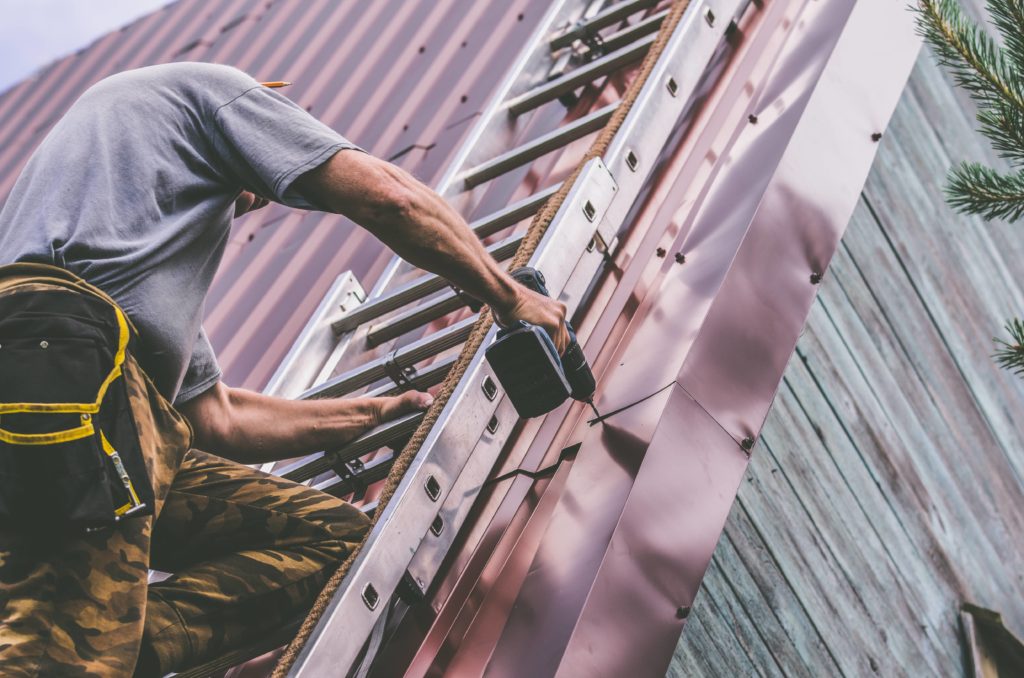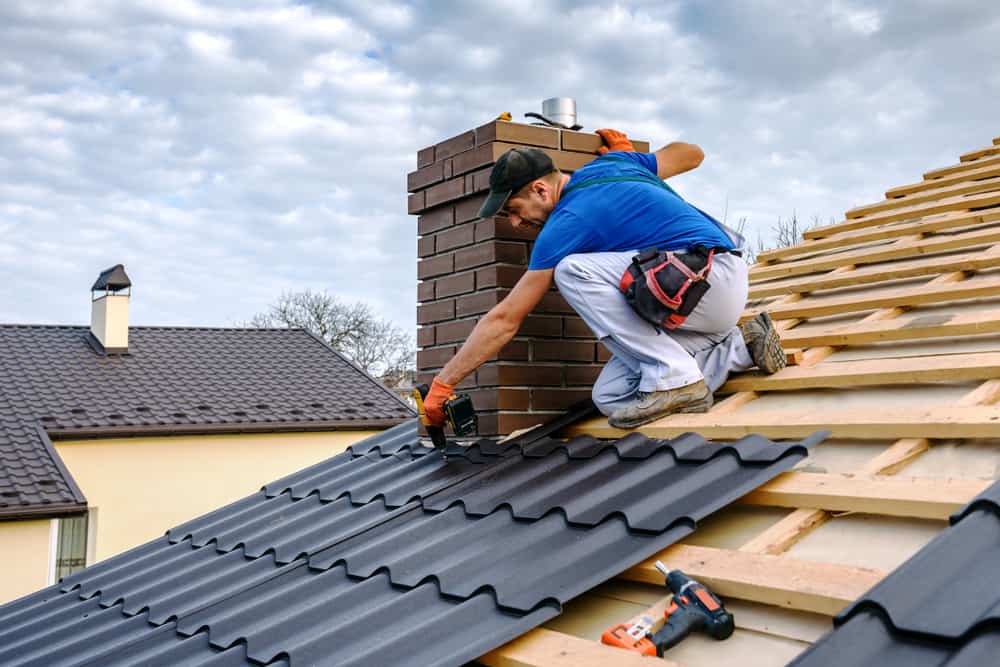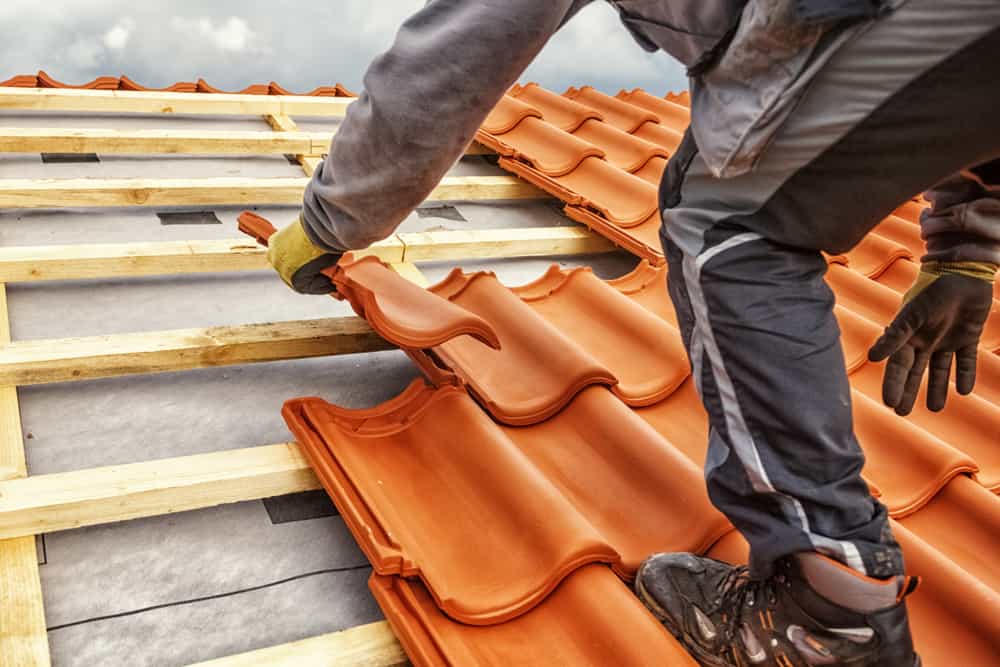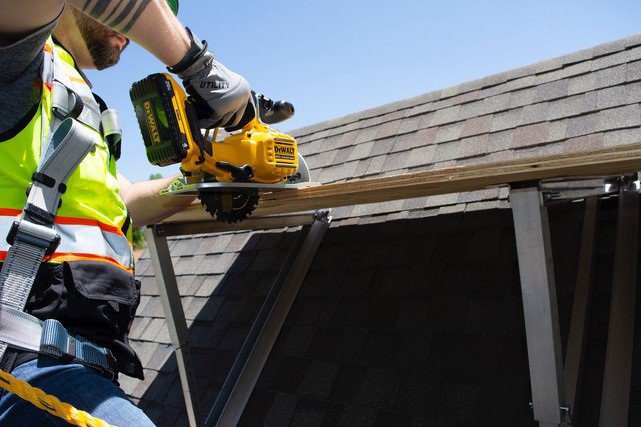Roof jacks are special tools that roofers use to make a safe and sturdy place to stand on sloped roofs. They are usually made of metal and look like brackets that can be attached to the roof. Roof jacks are important because they help roofers stay safe and work better.
These tools can be adjusted to fit different angles of roofs. They are very important for jobs like putting on new shingles, fixing the roof, or doing regular maintenance. By using roof jacks, roofers are much less likely to slip, fall, or have accidents when working on steep roofs.
Why Roof Jacks are Essential for Roofing Projects?

Roof jacks are essential for roofing projects due to their critical role in ensuring safety and efficiency. They provide a stable platform on steep, sloped roofs, significantly reducing the risk of falls and injuries for workers. By enabling a secure foothold, roof jacks allow roofers to work more comfortably and with greater precision, leading to higher quality installations and repairs. Additionally, they facilitate the placement of materials and tools close at hand, increasing productivity. Their adaptability to different roof pitches and conditions makes them indispensable for a wide range of roofing tasks, from minor repairs to extensive renovations.
Types and Features of Roof Jacks

Different Types of Roof Jacks
Fixed roof jacks are brackets that can’t be adjusted and are made for roofs with a specific slope. They are usually made of strong metals like steel and provide a sturdy, permanent place for roofers to work. To install them, they are securely attached to the roof using nails or screws. Fixed roof jacks work best for projects where the roof slope doesn’t change, giving workers and materials a stable place to be. They cost less than adjustable roof jacks but can’t be used on different types of roofs. To take care of them, you mostly need to check for rust or damage. Fixed roof jacks are often used on homes and buildings with roofs that have the same slope all over.
Adjustable Roof Jacks
Adjustable roof jacks are tools that can be used on many different roof slopes. They are made from strong materials like steel or aluminum and can be easily moved around, making them good for different kinds of roofing projects. The best thing about them is that they can be adjusted to fit different roof angles, providing a safe and stable place to work on various slopes. They are attached to the roof temporarily and can be moved as the work moves along. While they cost more than fixed roof jacks, their flexibility makes them very useful for roofers working on different kinds of roofs. To maintain them, you need to regularly check the parts that allow them to be adjusted.
Specialized Roof Jacks for Unique Roof Types
Specialized roof jacks are made for unusual or unique roof types, like very steep slopes or curved surfaces. These jacks are often custom-made to make sure workers can stay safe on roofs where regular jacks wouldn’t work. They might be made with special materials or designs, like extra support or wider platforms, to make them even safer and more stable. These specialized jacks are necessary for working on roofs with complicated designs, ensuring that even the most challenging roofing jobs can be done safely and well. Because they are custom-made, they can cost more and require special knowledge to install and use correctly.
Key Features to Look For

| Feature | Importance |
|---|---|
| Material | Durable metals like steel or aluminum are preferred for strength and longevity. |
| Weight Capacity | Should have a high load capacity to safely support workers and materials. |
| Adjustability | For adjustable roof jacks, the ease and range of adjustability to suit various roof pitches is crucial. |
| Installation | Easy and secure installation is vital for safety and efficiency. |
| Stability | Must provide a stable platform, reducing the risk of slips or falls. |
| Durability | Resistance to weather elements and general wear and tear. |
| Safety Standards | Compliance with relevant safety standards and regulations. |
| Portability | Especially important for adjustable roof jacks used in multiple locations. |
| Compatibility | Should be compatible with the specific type of roof and roofing materials used. |
| Maintenance Needs | Low maintenance needs with easy inspection and repair options. |
| Cost | Competitive pricing without compromising on quality and safety features. |
| Brand Reputation | Established brands with positive reviews and reliable customer service. |
Installation Process

Before installing roof jacks, it’s crucial to prepare adequately to ensure a safe and effective installation process.
Tools and Materials Needed:
- Roof jacks (fixed or adjustable as required)
- Hammer or nail gun
- Measuring tape
- Chalk line or marker
- Screws or nails (as recommended by the roof jack manufacturer)
- Level
Safety Gear and Precautions:
- Safety harness and anchoring system
- Non-slip roofing shoes or boots
- Gloves and safety glasses
- Hard hat
- Ensure the roof is dry and free from debris
Step-by-Step Guide to Installing Roof Jacks:
- Measuring and Marking Placement:
- Determine the appropriate height on the roof for the roof jack placement, usually starting a few feet up from the eave.
- Use a measuring tape and chalk line to mark a straight, level line where the top of the roof jacks will align.
- Securely Attaching Roof Jacks:
- Align the roof jack with the marked line, ensuring it is level.
- Attach the roof jack to the roof using nails or screws, as per the manufacturer’s guidelines. Typically, this is done through the holes provided in the roof jack flange.
- Ensure that nails or screws penetrate the roof sheathing and ideally into a rafter or truss for maximum stability.
- Ensuring Stability and Load Distribution:
- After installation, test the roof jack for stability before full weight application.
- Distribute materials evenly across multiple jacks to avoid concentrated load points.
Common Installation Mistakes to Avoid

Incorrect Placement
Placing roof jacks either too high or too low can be a critical error. If placed too high, they won’t provide the necessary support for the lower part of the roof, leading to an unstable work area. Conversely, if positioned too low, they won’t effectively support workers and materials higher up on the slope. The ideal placement should balance accessibility and stability, ensuring that the entire working area on the roof is safely accessible.
Overloading Capacity
Each roof jack has a specified weight limit determined by the manufacturer, which must never be exceeded. Overloading a roof jack can lead to catastrophic failure, risking injury to workers and damage to the roof structure. It’s vital to distribute the load evenly across multiple jacks and continually monitor the weight of both workers and materials on the platform.
Neglecting Weather Conditions
Weather conditions play a significant role in the safety of roofing work. Installing roof jacks in wet, icy or windy conditions can be extremely hazardous. These conditions can compromise the stability of the roof surface and the roof jacks, increasing the risk of slips and falls. It’s crucial to plan roofing work for clear, dry days and to cease operations if unexpected adverse weather conditions arise.
Usage and Applications

Roof jacks are indispensable tools in roofing, serving a variety of purposes to enhance safety and efficiency. They are primarily used for providing stable platforms on sloped roofs during shingle installation, repair and replacement. Roof jacks also facilitate other tasks like painting, gutter maintenance and installation of solar panels. Their stability is crucial for carrying heavy materials up steep slopes and offering a secure foothold for workers. By reducing the risk of slips and falls, they not only safeguard the workers but also contribute to the overall quality and speed of the roofing work, making them a key component in residential and commercial roofing projects.
Maintenance and Care

Routine Maintenance Tips
Roof jacks are indispensable tools in roofing, serving a variety of purposes to enhance safety and efficiency. They are primarily used for providing stable platforms on sloped roofs during shingle installation, repair and replacement. Roof jacks also facilitate other tasks like painting, gutter maintenance and installation of solar panels. Their stability is crucial for carrying heavy materials up steep slopes and offering a secure foothold for workers. By reducing the risk of slips and falls, they not only safeguard the workers but also contribute to the overall quality and speed of the roofing work, making them a key component in residential and commercial roofing projects.
Troubleshooting Common Issues
- Loose or Shaky Jacks:
- Check and tighten all installation nails or screws.
- Ensure jacks are properly anchored into the roof sheathing and rafters.
- Uneven Platform:
- Adjust the placement to ensure jacks are level.
- Use a spirit level to confirm the alignment.
- Difficulty in Adjusting (Adjustable Jacks):
- Lubricate moving parts if they are stiff.
- Check for any debris or rust that may be hindering the adjustment mechanism.
- Rust or Corrosion:
- Inspect for signs of rust and treat with rust-inhibiting products.
- Replace the jacks if corrosion is extensive.
- Reduced Stability in Windy Conditions:
- Avoid using in extremely windy conditions.
- Ensure that the jacks are securely fastened and use additional support if necessary.
- Squeaking or Noise:
- Lubricate any metal-to-metal contact points.
- Tighten all connections to reduce movement.
- Difficulty in Removing Nails or Screws:
- Use the appropriate tools for removal.
- Apply a penetrating oil if they are stuck due to rust.
- Damage to Roofing Material:
- Ensure correct installation techniques to avoid puncturing or scratching the roofing material.
- Use protective padding if necessary.
Selecting the Right Roof Jacks
Selecting the right roof jacks involves considering several key factors. First, assess the roof’s pitch and type; adjustable jacks are versatile for varied slopes, while fixed jacks suit consistent pitches. Material durability is crucial, with steel or aluminum being preferred for strength and longevity. Evaluate the weight capacity to ensure it supports the load of workers and materials. Opt for jacks that comply with safety standards and are easy to install and adjust. Additionally, consider the brand’s reputation for quality and customer service. Finally, factor in the project’s scale and frequency to determine whether a more robust or economical option is suitable.
FAQs
Roof jacks are generally safe for most types of sloped roofs, but it’s important to choose the right type for your specific roof pitch and material.
Install roof jacks by securely attaching them to the roof sheathing, ensuring they are level and stable.
Fixed roof jacks are set for a specific pitch, while adjustable ones can be altered to fit various roof slopes.
If installed and used correctly, roof jacks should not damage your roof. Use caution to avoid over-penetration of nails or screws.
Cease using it immediately and check the installation. Ensure it’s properly secured to the roof and that the load capacity isn’t exceeded.
Inspect your roof jacks regularly for signs of wear or damage. Replace them if you notice any structural weaknesses or corrosion.
Yes, there are roof jacks specifically designed for metal roofs, which accommodate the unique properties of these materials.
Conclusion
Roof jacks are very important for making sure that roofing projects are safe and done well. It doesn’t matter if you’re working on a home or a building. Choosing the right kind of roof jack – whether it’s fixed, adjustable, or made for a specific type of roof – can help prevent accidents, give workers a stable place to stand, and make the overall quality of work better.
When picking roof jacks, it’s important to think carefully about things like what kind of roof you have, how strong the materials are, how much weight the jacks can hold, and whether they meet safety rules. If you take good care of your roof jacks and put them on the roof correctly, they will work well and make roofing jobs safer and easier to handle.




